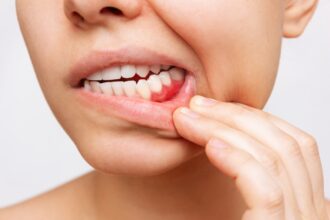There are a lot of people that have oral health problems that need to be treated. Around one in five adults have untreated tooth decay. Others have cracked teeth or gum disease.
Of course, some people intend to treat their oral health problems down the road. Others may not have the money to pay for treatment and need to save up.
However, some people simply don’t know that they have dental health issues in the first place. The good news is that these problems are easier to identify than ever these days, especially because of the advent of dental x-rays.
Many people worry about going to the dentist. In fact, 36% of people have some form of dental anxiety. Often, they fear finding out they need a filling or, worse, a root canal. Yet not everyone knows how useful dental X-rays can be in stopping big problems before they start.
Dental X-rays give dentists a full picture of your mouth’s health that they can’t see just by looking.
One key fact is that dental X-rays help spot trouble early on, like tiny cavities you didn’t even feel were there. This blog will show you why these images are so important for keeping your teeth healthy and saving you from future pain and expenses.
Keep reading to learn more!
What are Dental X-rays?
Dental X-rays are pictures of the teeth and gums that help dentists see problems not visible during a regular check-up. They use radiography technology to capture images of the internal structures of the mouth.
This includes teeth, roots, jaw placement, and facial bone composition. These X-rays play a big role in finding issues early on. For example, they can spot decay between teeth or under fillings.Dental imaging lets us catch what we can’t see with just our eyes.
Radiation from these X-rays is very low, especially when compared to other daily exposures to radiation. Dentists often use them to make sure kids’ teeth are growing right and to plan out treatments for all ages.
Next up: Importance of Dental X-rays in Early Diagnosis
Importance of Dental X-rays in Early Diagnosis
Dental X-rays play a crucial role in early diagnosis by detecting signs of decay, revealing hidden bone loss, identifying impacted teeth, and accurately diagnosing oral diseases. This helps dentists to provide timely treatment and prevent dental conditions from worsening.
When I visited my dentist, they explained how X-rays allow them to see problems that aren’t visible during a regular exam, ensuring comprehensive dental care.
Detecting early signs of decay
X-rays spot cavities early, even before you see or feel them. This is key in stopping tooth decay fast. By finding these hidden problems, x-rays keep small issues from turning into big ones.
This means less pain and cost for you down the road.
They also give a full view of your oral health. This helps dentists make sure every part of your mouth is healthy. With regular x-rays, dentists can watch for changes and catch any new decay as soon as it starts.
Revealing hidden bone loss
Dental X-rays play a key role in showing bone loss that you cannot see. They can find changes in bone density early on. This is very important for treating periodontal disease. By catching these signs early, dentists can work to stop tooth loss and keep your mouth healthy.
Regular X-rays are vital to prevent tooth loss.
Next, dental X-rays also help spot impacted teeth.
Identifying impacted teeth
Dental X-rays help spot impacted teeth, especially in children. X-rays show teeth that haven’t grown in properly. They reveal issues with the roots and surrounding areas, allowing for early intervention to fix the problem.
Different types of X-rays give a detailed look at impacted teeth not visible to the naked eye, aiding accurate diagnosis and treatment. They can play an important role in helping identify wisdom teeth that need to be extracted.
Now let’s discuss “Types of Dental X-rays”.
Diagnosing oral diseases accurately
When dentists use X-rays, they can accurately diagnose oral diseases. This helps them find problems like gum disease and infections early. They do this by looking at the images to see what’s happening inside your mouth.
X-rays are also used to spot issues like impacted teeth and bone loss. Having these pictures taken regularly can ensure that any changes in your oral health are closely monitored. Early detection through X-rays means preventing severe complications later on.
Types of Dental X-rays
Types of Dental X-rays provide detailed images of the teeth and surrounding bone. They help dentists identify problems such as cavities, gum disease, and infections.
Bitewing X-ray
A Bitewing X-ray helps detect cavities between teeth, especially in the back of the mouth. It also reveals bone loss around the teeth. During this procedure, a holder is placed in your mouth while a technician takes the X-ray.
For patients with low cavity risk, it’s recommended to have this X-ray every 1-2 years. Early detection through Bitewing X-rays can prevent complex dental procedures and help monitor tooth development in children.
Periapical X-ray
Moving on from the Bitewing X-ray, let’s discuss the Periapical X-ray. This type of dental x-ray shows the whole tooth, from its crown to the tip of its root. It is useful for spotting decay and gum disease.
The focus is on each individual tooth and surrounding bone structure, making it a valuable tool for pinpointing root-related issues like abscesses or cysts.
The Periapical X-ray provides an in-depth view that helps dentists make accurate diagnoses without hesitation during your visit. Whether it’s detecting hidden problems or confirming treatments, this x-ray plays a pivotal role in ensuring your oral health is well taken care of.
Panoramic X-ray
A panoramic X-ray takes a single image of your whole mouth using low ionizing radiation. This type of dental radiography is valuable for diagnosing periodontal disease, cysts, and tumors.
The imaging process only takes 12 to 20 seconds with a rotating arm capturing the picture.
It’s safe for children as there’s no need to place film inside their mouth. However, it does have limitations – it doesn’t provide detailed information about individual teeth or soft tissues.
Conclusion
Dental X-rays play a crucial role in early detection of dental conditions. They allow dentists to identify issues that may not be apparent during a standard examination. This can aid in preventing more severe problems and minimizing the necessity for extensive treatments in the future.
Recognizing the importance of dental X-rays empowers patients to take a proactive stance towards their oral health, ultimately leading to improved overall well-being.
References
- https://highlanddentalky.com/beyond-the-surface-unveiling-the-importance-of-dental-x-rays/ (2024-01-30)
- https://www.colgate.com/en-us/oral-health/x-rays/the-importance-of-dental-x-rays
- https://cvfamilydentistry.com/the-importance-of-early-detection-how-dental-x-rays-can-save-your-smile/ (2023-04-13)
- https://urbansmileschicago.com/beyond-the-surface-unveiling-the-hidden-power-of-dental-x-rays/
- https://altoonasmiles.com/blog/the-importance-of-dental-x-rays/
- https://smartdentalnetwork.com/resources/understanding-the-importance-of-dental-x-rays-in-maintaining-oral-health/
- https://custercreekdental.com/what-are-the-three-types-of-dental-x-rays/
- https://my.clevelandclinic.org/health/diagnostics/11199-dental-x-rays
- https://www.radiologyinfo.org/en/info/panoramic-xray
Factual Data:
General Facts
1. Dental X-rays, also known as radiographs, offer a comprehensive view of dental health.
2. X-rays help detect decay and diseases not visible to the naked eye.
3. They allow dentists to see the condition of teeth, roots, jaw placement, and facial bone structure.
4. Dental X-rays can show small areas of decay between teeth, decay beneath existing fillings, cysts, various types of tumors, bone loss in the jaw as a result of periodontal disease, the alignment of teeth, and the presence of abscesses.
5. Common types of dental X-rays include Bitewing X-rays, Periapical X-rays, and Panoramic X-rays.
6. Dental X-rays, specifically panoramic X-rays, provide a comprehensive view of the entire mouth in a single image, helping to identify various dental issues such as cysts, jaw disorders, and bone irregularities.
7. The safety of dental X-rays is emphasized, with the MOUTH HEALTHY resource stating that dental X-rays are safe and expose patients to low levels of radiation with minimal associated harmful effects.
8. The article encourages emphasis on preventive care to reduce the need for X-rays, such as regular brushing and flossing to prevent tooth decay.
9. Dental X-rays are crucial for early detection of tooth decay and other dental problems, leading to cost savings and a reduction in pain associated with dental issues.
10. Personalized approach to dental X-rays ensures benefits outweigh risks of radiation exposure, and guidelines for radiographic examinations address specific scenarios based on individual patient needs.
Source URLs
https://www.colgate.com/en-us/oral-health/x-rays/the-importance-of-dental-x-rays
https://www.actonsmilehub.com/blog/why-do-dentists-take-x-rays
Facts about – What are Dental X-rays?
– Dental X-rays enable dentists to visualize internal structures of the mouth.
– They allow for the detection of potential problems not visible during visual examinations.
– X-rays assess teeth, roots, jaw placement, and facial bone structure.
– Important for monitoring growth and development in children’s teeth.
– Radiation exposure from dental X-rays is minimal compared to everyday activities.
– They guide treatment plans in preventive and diagnostic dentistry.
Source URLs
https://www.colgate.com/en-us/oral-health/x-rays/the-importance-of-dental-x-rays
https://www.actonsmilehub.com/blog/why-do-dentists-take-x-rays
Facts about -Detecting early signs of decay, Importance of Dental X-rays in Early Diagnosis
– X-rays enable early detection of cavities not visible during routine examinations.
– They help prevent the progression of dental issues such as cavities.
– X-rays can reveal issues like impacted teeth and bone loss.
– Common problems identifiable by X-rays include tooth infections.
– Early detection through X-rays can save costs and reduce dental pain.
– They provide a comprehensive view of dental health.
Source URLs
https://www.colgate.com/en-us/oral-health/x-rays/the-importance-of-dental-x-rays
https://www.actonsmilehub.com/blog/why-do-dentists-take-x-rays
Facts about -Revealing hidden bone loss, Importance of Dental X-rays in Early Diagnosis
– Dental X-rays are essential for diagnosing hidden bone loss.
– They reveal changes in bone density crucial for treatment.
– Early detection aids in diagnosing periodontal disease.
– X-rays help in the identification of areas of bone loss.
– Regular X-rays contribute to preventing tooth loss.
– X-rays reveal bone loss from periodontal disease.
Source URLs
https://www.colgate.com/en-us/oral-health/x-rays/the-importance-of-dental-x-rays
https://www.actonsmilehub.com/blog/why-do-dentists-take-x-rays
Facts about -Identifying impacted teeth, Importance of Dental X-rays in Early Diagnosis
– Dental X-rays are essential for identifying impacted teeth.
– They reveal the health status of tooth roots and surrounding areas.
– X-rays help assess the alignment of teeth and jawbone structure.
– Different types of X-rays offer comprehensive assessments for impacted teeth.
– They facilitate timely interventions for impacted teeth in children.
– X-rays reveal impacted teeth not visible to the naked eye.
Source URLs
https://www.colgate.com/en-us/oral-health/x-rays/the-importance-of-dental-x-rays
https://www.actonsmilehub.com/blog/why-do-dentists-take-x-rays
Facts about -Diagnosing oral diseases accurately, Importance of Dental X-rays in Early Diagnosis
– Dental X-rays enable early detection of tooth decay before it affects the tooth pulp.
– They are crucial for identifying hidden problems like infections, tumors, and bone loss.
– Regular check-ups often include X-rays to monitor changes in oral health.
– New patients typically receive X-rays to establish a baseline for their oral health.
– X-rays contribute to diagnosing gum disease, impacted teeth, and infections.
– Early diagnosis through X-rays can prevent severe complications.
Source URLs
https://www.colgate.com/en-us/oral-health/x-rays/the-importance-of-dental-x-rays
https://www.actonsmilehub.com/blog/why-do-dentists-take-x-rays
Facts about -Bitewing X-ray, Types of Dental X-rays
– Primarily used to detect cavities between teeth, especially in the back of the mouth.
– Can detect bone loss around the teeth.
– Procedure involves placing a holder in the mouth while a technician takes the X-ray.
– Recommended every 1-2 years for patients with low cavity risk.
– Early detection of cavities can prevent complex dental procedures.
– Helps monitor tooth development in children.
Source URLs
https://www.colgate.com/en-us/oral-health/x-rays/the-importance-of-dental-x-rays
https://www.actonsmilehub.com/blog/why-do-dentists-take-x-rays
Facts about -Periapical X-ray, Types of Dental X-rays
– Shows the entire tooth from crown to root tip.
– Useful for detecting decay and gum disease.
– Best suited for examining individual teeth in detail.
– Focuses on the entire tooth and surrounding bone.
– Helps in diagnosing root-related problems.
– Provides a detailed view for accurate diagnosis.
Source URLs
https://www.colgate.com/en-us/oral-health/x-rays/the-importance-of-dental-x-rays
https://www.actonsmilehub.com/blog/why-do-dentists-take-x-rays
Facts about -Panoramic X-ray, Types of Dental X-rays
– Captures the entire mouth in a single image using minimal ionizing radiation.
– Common uses include diagnosing periodontal disease, detecting cysts and tumors.
– Imaging process takes 12 to 20 seconds with a rotating arm capturing the image.
– Digital panoramic images can be adjusted for contrast and brightness.
– Safe for young children as they do not require film placement inside the mouth.
– Limitations include a lack of detailed information about individual teeth and soft tissues.
Source URLs
https://www.colgate.com/en-us/oral-health/x-rays/the-importance-of-dental-x-rays
https://www.actonsmilehub.com/blog/why-do-dentists-take-x-rays








